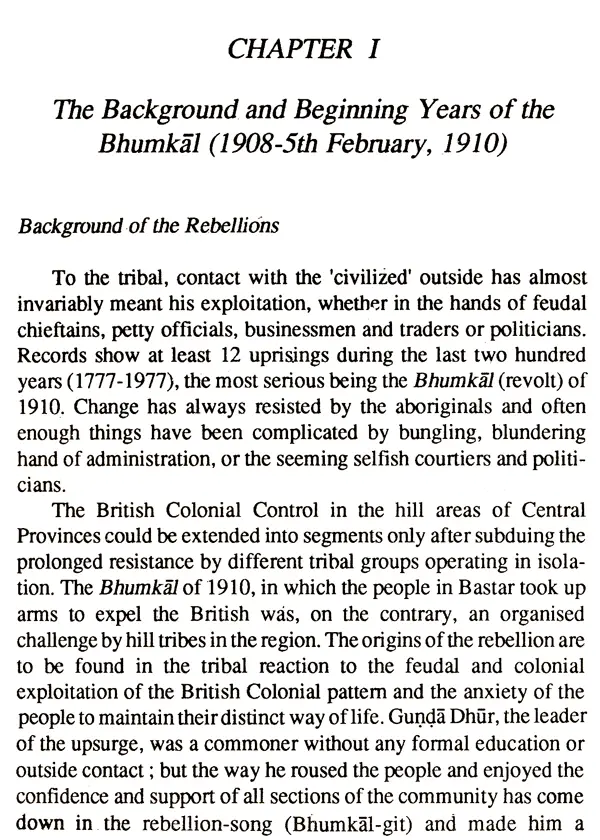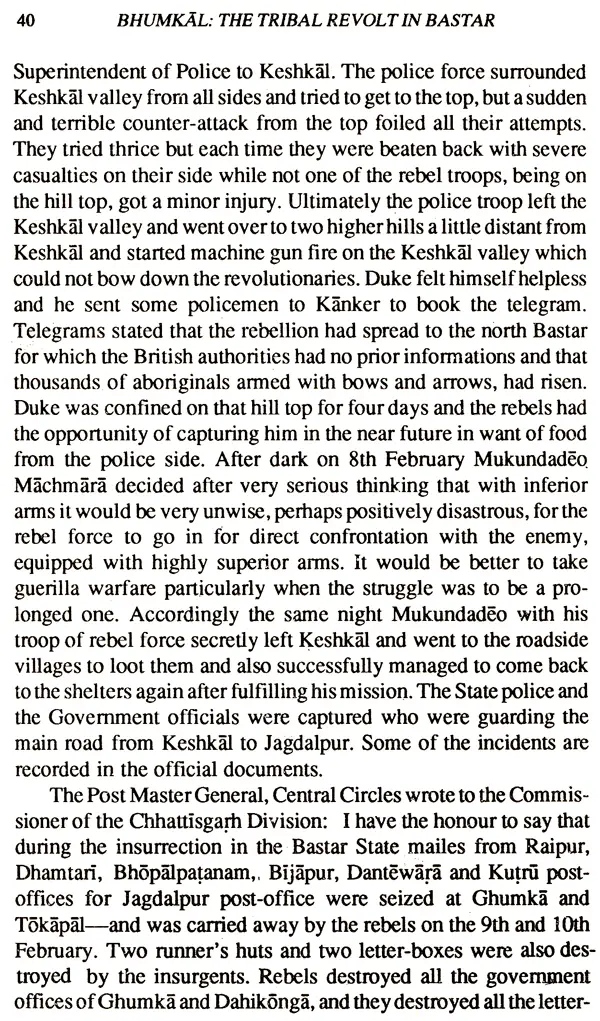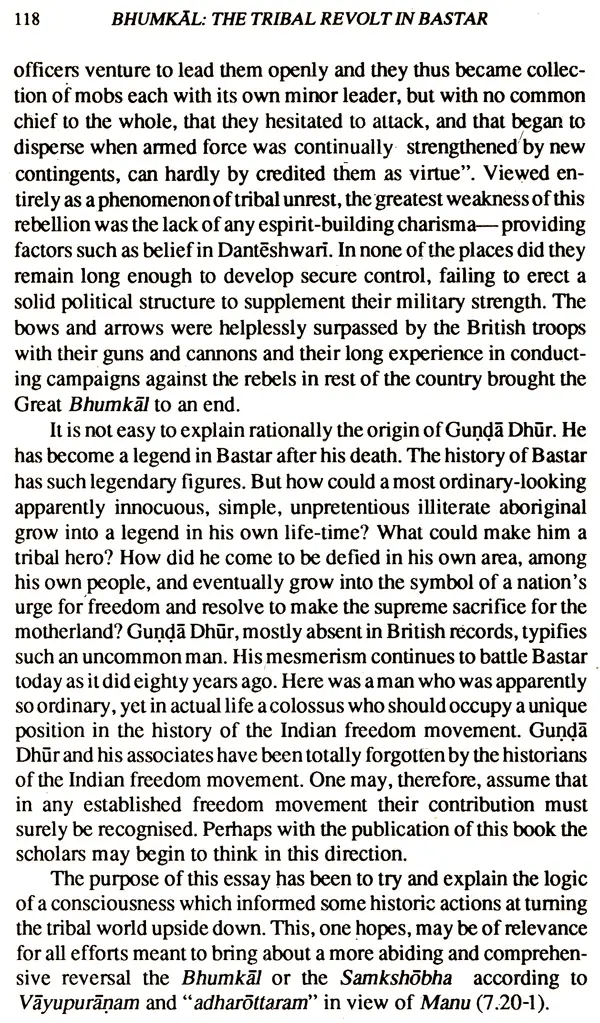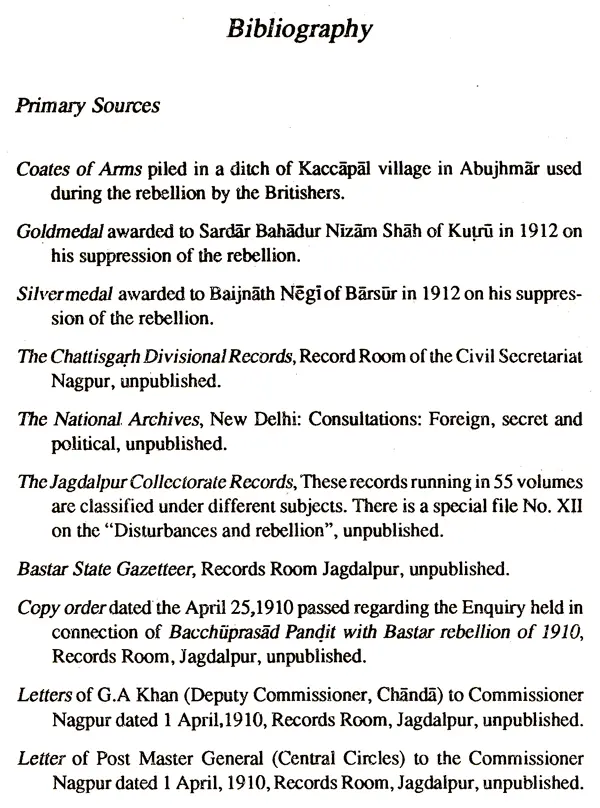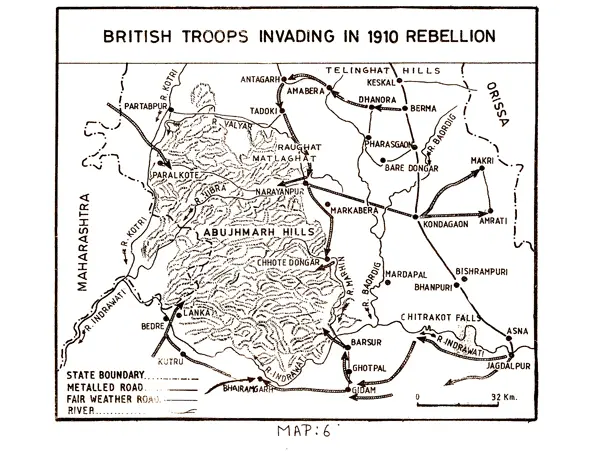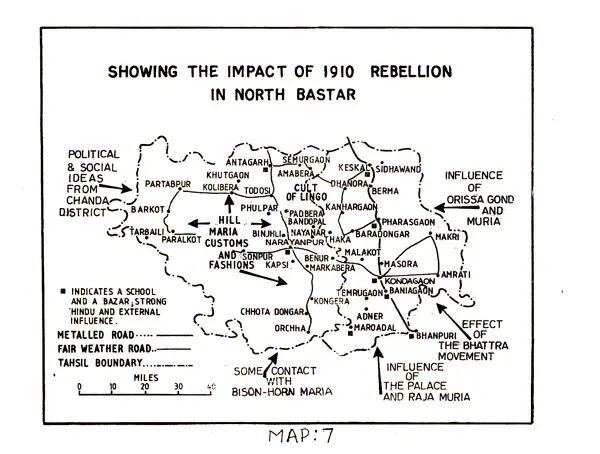
Bhumkal - The Tribal Revolt In Bastar (The Story of Gundadhur and His Movement)
Book Specification
| Item Code: | UAF603 |
| Author: | H.L. Shukla |
| Publisher: | Sharada Publishing House, Delhi |
| Language: | English |
| Edition: | 1991 |
| ISBN: | 818532007X |
| Pages: | 128 (8 Black and White Illustrations) |
| Cover: | HARDCOVER |
| Other Details | 9.00 X 5.50 inch |
| Weight | 250 gm |
Book Description
In this book Professor H. L. Shukla studies what is one of the oldest of all forms of Oral poerty, the rebel song which tells of the great expliots of Guṇḍā Dhūr. The author elaborates in detail the primitive rebel consciousness as found in the Bhumkal-git of Bastar. He succeeds in providing sparkling insights and useful discussion of the elements of tribal protest. It will interest historians, sociologists, anthropologists, political scientists and folklorists.
H. L. Shukla is Professor of Comparative Languages and Culture at Bhopal University and is known for his tribal research. He is the author of 26 books and numerous articles on the tribel theme published from India and abroad.
Bastar District (17°47'N-20°34'N and 80°15'-82°15'E) cover ing an area of 15,124 square miles or 39,191 square kilometres in Madhya Pradesh (Middle India) represents two former feudatory states of Känker and Bastar. Bastar state was a large state of 13,725 square miles lying between 17°45' and 20° 14' North and 80°15' and 82°1' East. It was bounded on the north by Kanker state and Durg district of Central Provinces, on the west by the Ahiri Zamindāri of Chanda district, on the east by the Jeypore Zamindārī of Orissa, and to the south by the Nizam dominions. In 1931 its population was 5,24,721, in the last ten years i.e. in 1941, the figures had risen to 6,44,912.
The tribal communities existed in Bastar during 18th Century, adapting itself to, and gradually entering, the feudal social system, as in modern times. In the medieval period the tribal community reflected the age-old history of arrogant interference in the aborigi nal's agrarian relationships both by the Raja and Zamindārs. It drove the aboriginals into petty medieval associations of a fiscal, tax-levying nature, into associations for the ownership of allotment of land, i.e., into the village communities.
**Contents and Sample Pages**


